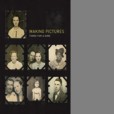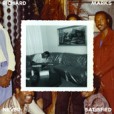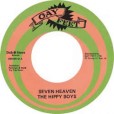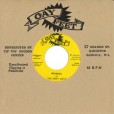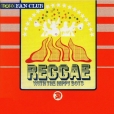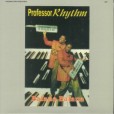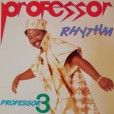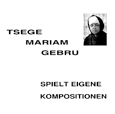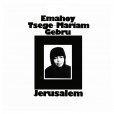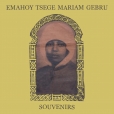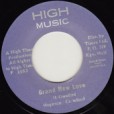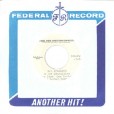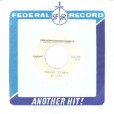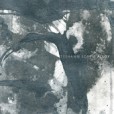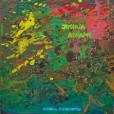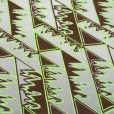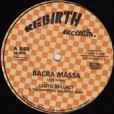Your basket is empty

His second EP for this excellent Finnish label.
‘Four tracks of arctic tropicalia constructed during last summer’s heatwave. Badly behaving analogue synths and echos were layered with noisy field recordings and improvised percussion instruments. Some dub was also thrown in. When temperatures finally started dropping, files were sent to Scape Mastering.’
Photos from the ramshackle mobile photo booths run during the 1930s by the Massengill family of rural Arkansas.
Compelling, sharply poignant glimpses of the Depression-era South, alongside essays, remembrances and diary transcriptions.
‘June 18, 1939 Mr Pennington drowned today. We went home about 4:00 o’clock and made cream at mama’s.’
180 pages, beautifully done.
A Now Again labour of love: the complete works of this legendary guitarist-singer-songwriter from Atlanta. His earliest work for the Tuska label, through his more mature releases for Shout, and smaller regional labels like Note, Free Spirit and RSC, at the most subterranean and fertile interface of Southern soul and funk. CD presented in a fifty-six-page, saddle-stitched book, with extensive essays on Marks’ career and never-before-seen photos and ephemera. Great stuff.
Lloyd Charmers, Alva Lewis, Glen Adams and the Barrett brothers, holding a candle for ska at the close of the 1960s. With a precious, uptempo, alternate take, on the flip.
Mid-nineties kwaito by Thami Mdluli (veteran of chart-toppers Taboo and CJB, and in-demand producer of the likes of Sox and Sensations).
Tasty, infectious rhythms and synth-work — if the singing is a bit Black Box — with an up-for-it, DIY energy and self-identity encouraged by the momentum of the liberation struggle in this period. “Once Mandela was released from prison and people felt more free to express themselves and move around town, kwaito was becoming the thing,” says Thami.
Utterly beautiful solo-piano explorations in African folk, spiritual meditation, Satie-esque classicism and Tatum-esque jazz, by this Ethiopian nun, making her 1963 LP debut, recorded in Germany. Stunning; highly recommended.
‘Gebru is a true original,’ says the label. ‘Her playing is somewhere between Satie, Debussy, the liturgical music of the Coptic Ethiopian Church, and Ethiopian traditional music. It is some of the most moving piano music you will ever hear! All original compositions available for the first time on vinyl beyond the original early 1960s editions, which are completely impossible to find. Old school tip-on cover with gold foil printing. A must-have masterpiece for anyone who needs some spiritual comfort.’
‘Emahoy recorded these songs direct to cassette tape in her family’s home in Addis Ababa in the late 70s. She carried the master tapes with her when she entered permanent exile in Jerusalem in 1985. They stayed in her tiny cell at the Church of Kidane Mehret until her passing, in March 2023, aged 99.
‘I was on my way to see Emahoy and talk about the release of these songs when she passed away. While helping her family clear and pack her belongings, we found the original master tapes, from which this album is produced. Intimate, close, home recordings. You can hear Emahoy’s finger pressing down the stop button, the creak of her piano bench, birds out the window.
‘These are songs of mourning and exile. The Ethiopian Revolution of 1974 had changed her country so radically that Emahoy sang of missing home even though she was still physically in the country.
‘Emahoy wanted badly for these songs to be heard. She was proud of them, and even produced a tiny run of private press CDs sold at the gift shop of the monastery in 2013. But her family and those closest to her advised her against the release, worried about the intense backlash she’d receive for singing as a nun in the conservative Orthodox church.
‘Finally, these recordings get the release they deserve. We hope to do justice to the music and Emahoy’s legacy with this release — packaged in a reflective gold sleeve, with a sixteen-page booklet featuring lyric translations and photos of Emahoy’s life in the monastery in Jerusalem.’
(Cyrus, Mississippi Records).
Her 1972 private-press LP, plus two unreleased piano recordings, mapping out a deeply personal take on Ethiopian Church Music.
Here is Emahoy’s most directly sacred and spiritual music-making — and some of her most moving — self-recorded in churches across Jerusalem, on piano, harmonium, and pipe organ.
With extensive biographical notes by Thomas Feng. Beautifully remastered. Old school tip-on jacket with silver-foil stamping. Black or clear vinyl.
Previously a super-scarce JA blank. Hail the almighty Don D’s scorching solo — flashing a split-second premonition of Rico on Message To You, Rudy.
Two terrific, previously unreleased excursions on the Amos Milburn.
The trombone holds it down like Giant Haystacks, but that’s a tenor saxophone solo.
Lovely stuff.
The alluring, mystery female vocalist here is cool and deadly amidst the mayhem, beside a tasty harmonica lead. Nice bebop saxophone, too, on the flip.
Unmissable Maytals, in previously unreleased recordings from 1965.
Toots and co have this Coppa bang to rights — ‘Stop treating the people unkind’ — even before Don D boots him down the street and the hell out of Dodge.
This slipped in under the radar, just before Christmas. It’s a dazzling, soul-searching brew of deconstructed but highly lyrical piano-trio balladry, free improv, minimalism — critics will mention Morton Feldman in relation to anything at the drop of a hat — and Impressionists like Mompou, Faure… even startling shots of brilliant funk, in Template. Hotly recommended.
Positioning him between Milford Graves and Morton Feldman, the New York Times reckons this is ‘Mr. Sorey’s best album… bereft of almost anything resembling a steady cadence. Instead, what’s inside the pulse — resonance, fluid, potential — comes to the fore. It’s not rare for recordings of improvised music to give a sense of the physical space between instrumentalists, but with Mr. Sorey’s trio, that air seems to be in a state of charged collapse, packed with magnetic density.’
‘A rare and wonderful thing, a whirling, warm-blooded extension of the cosmic traveler’s inner consciousness, filled with surprise and steadiness instead of apprehension and fear. Fans of raga, psychedelic rock, jazz and world music are in for a real treat’ (Dusted).
‘Engaging, deliberately hypnotic music, its style ambiguously pitched between retro psychedelia, contemporary drone and timeless North African’ (All About Jazz).
‘One of the rough gems of the post-everything musical era’ (New York Times).

